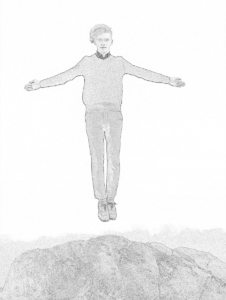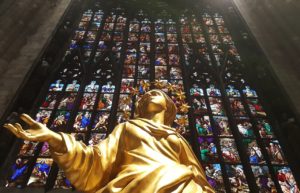Well educated, intellectual people, especially scientists at all times demonstrate considerably smaller adherence to religiosity than others. However, there are still believers of the idea of the God in science. If we exclude from their number those who feel a painful requirement for external protection and support by virtue of their poor living circumstances, there are those who come to idea of the God as a result of amazement at a world that has many unsolved problems. The surprising diversification of subjects and entities can be scientifically formulated in principle as it can sustain the quasi-stable condition and demonstrates development.
Common sense suggests, that for an explanation of the observable diversification in life, it is necessary to admit that each separate subject, each organism, each social unit, and even each computer program should contain a special internal causative engine, a local determinism, which maintains an autonomous internal life in it.
The conventional concept of determinism does not suppose the existence of such sources. This represents a scandalous weakness in the concept. Not finding the required causative source within the framework of philosophy, people are compelled to address the always-available, exotic, exciting fantasies of the irrational sources that are available in religion and mysticism.
Today the situation can be considerably rectified. The recently published concept of Ring Determinism identifies the required internal causative source by way of a closed plot of the customary causal chain. This is a self-contained circuit which, it turns out, is contained in the entrails of each separate natural formation. This circuit is just that ontological base in which each separate natural formation finds and displays its exclusive individuality and asserts itself in the capacity of “causa sui ” – the cause of itself.
Internal local causative action, continuously circulating inside a separate body, is transmitted from element to element. It ensures its systemic, synergetic wholeness in the operation of its elements and subsystems in the phenomena of “emergence”, special internal policy, resistance to external actions, aggression directed externally, egotism, egocentricity, self-preservation, self-organization and finally, self-development.
One of the conclusions of ring determinism is, that under the supervisory control of the internal cause continuously circulating in a body, and under the continuous effects of external factors, there is the miracle of self-development. This results in an observable diversification of surprising properties of subjects, organisms, social units, human products and other things.
The local causative circuit can randomly or by design, become closed. Then finding an ability towards long-lived quasi-stable self-maintenance, self-resumption, or, in the case of dynamically developing systems, the determining vortex, it becomes the high-power engine which creates, saves and induces a flock of living and nonliving natural formations in development.
Educated people can now sigh with relief since a rather weighty rational argument against the idea of creationism has appeared and the necessity to appeal to irrational theories has vanished.









